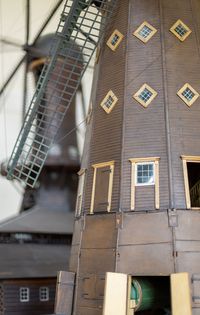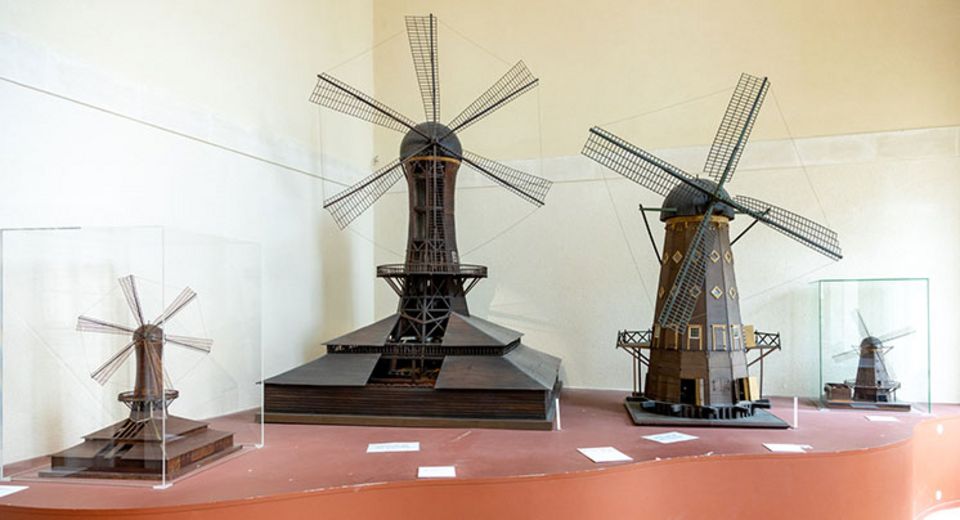Model of the silt dredging mill
Rochefort - Hôtel de Cheusses/Arsenal
In 1806, the engineer Jean-Baptiste Hubert came up with a novel solution to one of the Rochefort shipyard’s main problems: siltation. In order to remove the silt that infiltrated infrastructures and prevented ships’ access to the double dry dock, he set up a dredging system across the Charente. The energy required for its operation was supplied by a windmill.
Siltation, a major problem in Rochefort
Ever since its creation in the 17th century, Rochefort’s naval shipyard had been faced with a major problem: siltation. Silt from the Charente accumulated with each tide and infiltrated infrastructures. Such was above all the case in front of the double dry dock, soon making it impossible for ships requiring repair or maintenance to exit or enter the facility. Up until the early 19th century, the silt was removed by large scoops pulled by oxen. The operation was lengthy, complicated and expensive, however.
A novel solution
Trained at the École Polytechnique and appointed to Rochefort’s naval shipyard in 1805, the engineer Jean-Baptiste Hubert (1781-1845) provided a novel solution to this major problem. In 1806, he set up a dredging system across the Charente, which scoured the riverbed in continuous back-and-forth movement. The energy required for its operation was supplied by a windmill 31 metres high. Once access to the double dry dock had been cleared, the dredging system was operated twice a week to prevent silt from accumulating again. The surplus energy produced by the mill was used to operate a machine that ground the pigments for the colours used to paint ships, a lead rolling mill and a metal lathe.
Models testifying to changes in the naval shipyard
 Enlarge image : Moulins à draguer
Enlarge image : Moulins à draguer
Between 1807 and 1829, models on various scales of the silt dredging mill, as well as the sawmill built in 1814, were created by Rochefort shipyard’s model-making workshop. These days, they bear witness to the productivity and profitability concerns in the shipyard that mobilised Navy engineers during the 19th century.
Collection highlight
The essential works to see during your visit to the Musée national de la Marine in Brest, Port-Louis, Rochefort, Toulon, and soon in Paris.

